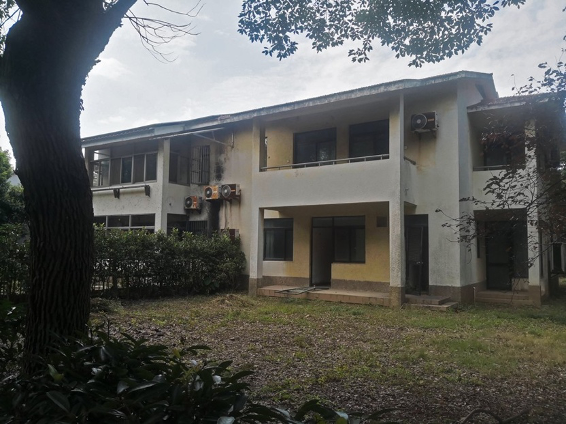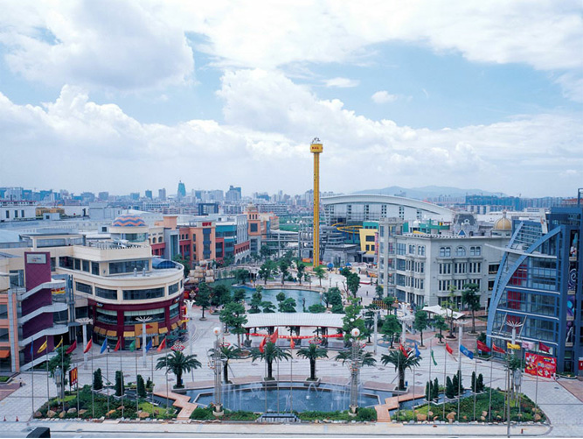Urban development
- Oceania Chee

- Apr 22, 2021
- 3 min read
If you were to drive down the Huqingping Highway in the opposite direction of downtown Shanghai, it would be a straight shot to Zhejiang province. About an hour into your drive, you would come across a residential compound, one of those grand faux-Gothic architectural affairs that you see all over the suburbs, the ones that typically house upper-middle class families. If, say, you were to sneak past the security guard at the front gate, you’d realize that the whole place is eerily silent and empty in a strangely new way. It’s not quite right to call it abandoned, because that would imply that people had once settled here. It’s just row after row of these huge, pristine houses, each one as empty and untouched as the last.

Shanghai is full of places like these—near Dianshan Lake, there is a similar residential area of European villa-style holiday homes along the coastline, almost completely empty. In Songjiang district, you can pay a reasonable price to walk around Thames Town, a replica of a quaint English town that usually attracts anywhere between 5-15 visitors a day.

Outside of Shanghai, the most infamous is probably the New South China Mall in Dongguan, which was originally touted as the world’s largest mall. More than twice the size of the Mall of America, and (allegedly, I couldn’t find photos of this) having erected giant replicas of the Egyptian sphinx upon opening in 2005, it stayed largely deserted for more than a decade. The point is, these are all opulent, expensive places built for a demographic that either doesn’t exist or that simply doesn’t care enough to be interested. These buildings are too new to have been left behind. Instead, they are the artifacts of the steady economic growth that China’s been experiencing since the 1980s, and the sudden influx of wealth, particularly in coastal cities. Thames Town in particular was planned as part of a series of nine European-style suburbs around Shanghai in 2001, eight of which never materialized.
As you continue visiting these areas, it becomes clearer and clearer that people aren’t meant to live in these buildings—they are assets and quota-fillers. It’s far more likely that all these holiday homes and grand residential areas are simply another way for the rich (and, especially in China, the well-connected) to maintain their wealth by holding onto real estate. Still, the people who would have the money to purchase a holiday home also have enough money to leave China when they go on vacation. Thames Town is pointless—not to mention, seemingly not worth the cost at all—for someone who can experience the real thing. And who is going to set up shop in an empty mall?
The cruel irony of all this—these arbitrary indicators of wealth, the culture of surplus that has consumed urban development in Shanghai—is that it is reliant on the steady dislocation of the low-income people in these areas. In Dianshan Lake, the villas are built on the land on which these displaced fishing communities have relied on for decades. Likewise, the construction of Thames Town came at the cost of agricultural land in what is now the Songjiang District. There’s a kind of morbid comedy to walking the near-abandoned streets of Thames Town (which, by the way, cost the SPC $330 million to construct), or visiting one of the many “ghost towns” in a city of 23 million people. It’s the extraordinary effort juxtaposed with the palpable arrogance juxtaposed with the actual, underwhelming conclusions.
So, what now? Is there value (both monetary and personal) in leaving these places to appreciate in value over time as Shanghai spills further and further out of its boundaries? Probably. I don’t know enough about the real estate market here to make any real judgements about it. But there is a little bit of a success story here, in the New South China Mall. As of 2017, with a recent renovation, it switched tracks to appeal to China’s middle class. It’s still too soon to tell, but the (tentatively) successful choice to abandon any attempts are especially telling, particularly in a time when national economic growth continues to slow down, year by year. Maybe, as time goes on, these places will fill up. For now, though, the villas an hour down Huqingping Highway remain empty as ever.



Comments